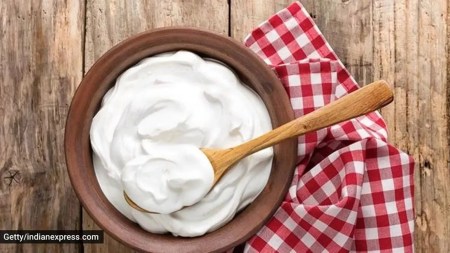Nutrition alert: Here’s what a 100-gram serving of bajra contains
In the world of grains, each holds its own unique nutritional story, and one that often stands out is the nutrition-packed bajra, or pearl millet. Bajra has been a staple in various cuisines for centuries, providing not only sustenance but also a wealth of health benefits.
From its rich fibre content to essential nutrients and potential health advantages, Ekta Singhwal, Dietician, Ujala Cygnus Group of Hospitals helped us understand why bajra deserves a place on your plate for both its cultural significance and its potential contributions to your well-being.

Nutritional Profile of Bajra
According to Singhwal, a 100-gram serving of bajra contains:
– Calories: 378 kcal
– Carbohydrates: 73.97 grams
– Dietary Fiber: 8.5 grams
– Sugars: 0.48 grams
– Protein: 10.67 grams
– Fat: 4.07 grams
– Vitamin C: Bajra is not particularly high in vitamin C.
– Vitamin A
– Vitamin K
– Vitamin B-complex (including B1, B2, B3, and B5)
– Calcium
– Phosphorus
– Iron
– Potassium
– Magnesium
– Copper
– Manganese
– Antioxidants: Bajra contains antioxidants like phenolic compounds and flavonoids.
 Here’s why you should have millets (Source: Pixabay)
Here’s why you should have millets (Source: Pixabay)
Health Benefits of Bajra
– Digestive Health: Bajra is rich in fibre, promoting healthy digestion and potentially preventing constipation.
– Heart Health: The fibrw and potassium in bajra may contribute to heart health by helping to manage blood pressure and cholesterol levels.
– Weight Management: The high fibre content can contribute to a feeling of fullness, aiding in weight management.
– Bone Health: Bajra contains essential minerals like calcium and phosphorus, important for maintaining bone health.
– Energy Boost: The complex carbohydrates in bajra provide a sustained release of energy, making it a good energy source.
– Blood Sugar Control: Bajra’s low glycaemic index may be beneficial for individuals with diabetes by helping to control blood sugar levels.
Can Diabetics Consume Bajra?
Individuals with diabetes can include bajra in their diet. Its low glycaemic index and high fibre content may help regulate blood sugar levels. However, moderation is key, and consultation with a healthcare professional is advisable.
Is it Beneficial for Pregnant Women?
Bajra can be beneficial for pregnant women due to its nutrient content, including iron and folic acid, which are crucial for the baby’s development. However, portion control is important.
Things to Keep in Mind
– Allergies: Individuals with known allergies to grains should be cautious.
– Sugar Content: Bajra has minimal sugar content, making it suitable for most diets.
– Overconsumption: Excessive intake may lead to digestive discomfort. Moderation is advised.
 Moderation is advised. (Source: Getty Images/Thinkstock)
Moderation is advised. (Source: Getty Images/Thinkstock)
Myths and Facts
– Myth: Bajra can cure diabetes.
Fact: Bajra can be a part of a balanced diet for diabetes management, but it cannot cure diabetes.
– Myth: Bajra can prevent or cure cancer.
– Fact: While a healthy diet, including bajra, may contribute to overall health, it cannot prevent or cure cancer on its own.
Disclaimer: The copyright of this article belongs to the original author. Reposting this article is solely for the purpose of information dissemination and does not constitute any investment advice. If there is any infringement, please contact us immediately. We will make corrections or deletions as necessary. Thank you.





